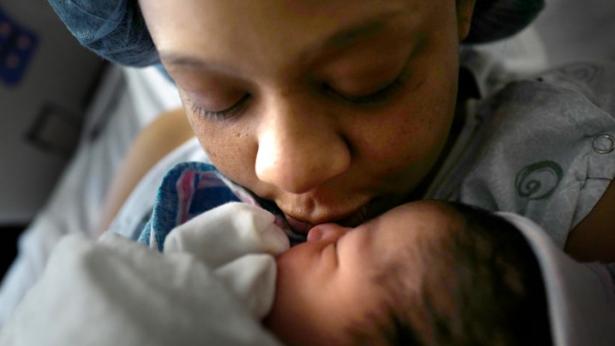For women in many developed countries, having the baby—not paying for it—is the hard part. Giving birth in Finland, for example, will set you back a little less than $60. But in the U.S., the average new mother with insurance will pay more than $4,500 for her labor and delivery, a new study in Health Affairs has found.
For the study, researchers at the University of Michigan looked at 657,061 American women who had health insurance through their jobs and who gave birth between 2008 and 2015. (All costs were adjusted for inflation, and 2015 was the most recent year for which data were available.) They analyzed the insurance claims data for the cost of all the treatments and services the women used during the year prior to their delivery, during the delivery itself, and for three months after—to account for any health services that might have affected their pregnancy outcomes.
Vaginal deliveries, the researchers found, cost women an average of about $4,314 out of pocket in 2015, up from $2,910 in 2008. The out-of-pocket cost of a cesarean birth, meanwhile went up from $3,364 to $5,161. The $4,500, meanwhile, was the average for all deliveries in 2015.
“I don’t have many patients who have that kind of cash just lying around,” says Michelle Moniz, an obstetrician-gynecologist at the University of Michigan’s Von Voigtlander Women’s Hospital and the lead author of the study. “I sometimes see patients struggling to afford their health care and sometimes choosing not to obtain health care because they can’t afford it.”
Read: Why childcare is so ridiculously expensive
It wasn’t that the procedures or technologies involved in childbirth became that much more expensive over time. The reason for the increase, according to the study authors, is the rise in high deductibles—the lump sums that insurance companies make their customers pay before the companies will kick in any money. Indeed, more Americans have found themselves on plans with high deductibles in recent years as employers have sought to shift health-care costs onto employees. In the new study, Moniz and her colleagues found that the percentage of women with deductibles rose from about 69 percent to about 87 percent in the seven-year time period. Women paid a greater share—about 7 percent more—of their childbirth expenses as a result.
In the U.S., 28 percent of insured workers are now on plans that have a deductible of at least $2,000, says Usha Ranji, an associate director for women’s health policy at the Kaiser Family Foundation. “Spending on maternity care really tracked with the trends that we’ve seen in private insurance overall,” she told me.
David Anderson, a research associate with the Duke-Robert J. Margolis Center for Health Policy who was not involved in the study, says while this study reinforces the effect of high deductibles on American patients, it has some drawbacks. By including all medical care in the 12 months leading up to delivery, he says, the Health Affairs authors risked overestimating the childbirth-related medical expenses of the women in the study. For example, a broken leg that a woman suffered 11 months before she went into labor would presumably have been included in the study. (Moniz acknowledged this limitation but argues an approach that included only expenses directly related to pregnancy would have undercounted the true cost, because some doctors’ visits in the months leading up to childbirth would not be coded by insurers as pregnancy-related.)
The cost of having a baby can be especially steep for the 45 percent of women whose pregnancies are unplanned. Because they might not have been expecting a baby when they signed up for their health plans, they might not have set aside the money to pay for their delivery or signed up for coverage that would have taken care of more of their delivery costs. (Childbirth is the No. 1 reason for hospitalization among American women.) What’s more, the cost of the delivery is just the first in a series of major child-bearing expenses to come. Not long after these mothers have paid their hospital bills, they’ll be shelling out for daycare, sitters, clothes, and school fees. “This is the kind of money that causes people to go into debt,” Moniz says.
Read: Americans are going bankrupt from getting sick
This study, like many others, highlights the limits of American health insurance, including for those who are insured. Even though the Affordable Care Act brought order to the wild west of health insurance, customers can still get stuck with large bills. Some hospitals allow their doctors to bill their patients as out-of-network providers, for example, and even a standard 20 percent co-pay on an expensive medication or treatment can work out to hundreds of dollars.
Olga Khazan is a staff writer for The Atlantic, covering health, gender, and science. Prior to that, she was The Atlantic’s Global editor. She has also written for the Los Angeles Times, the Washington Post, Forbes, and other publications. She is a two-time recipient of the International Reporting Project’s Journalism Fellowship and winner of the 2017 National Headliner Awards for Magazine Online Writing.


Spread the word